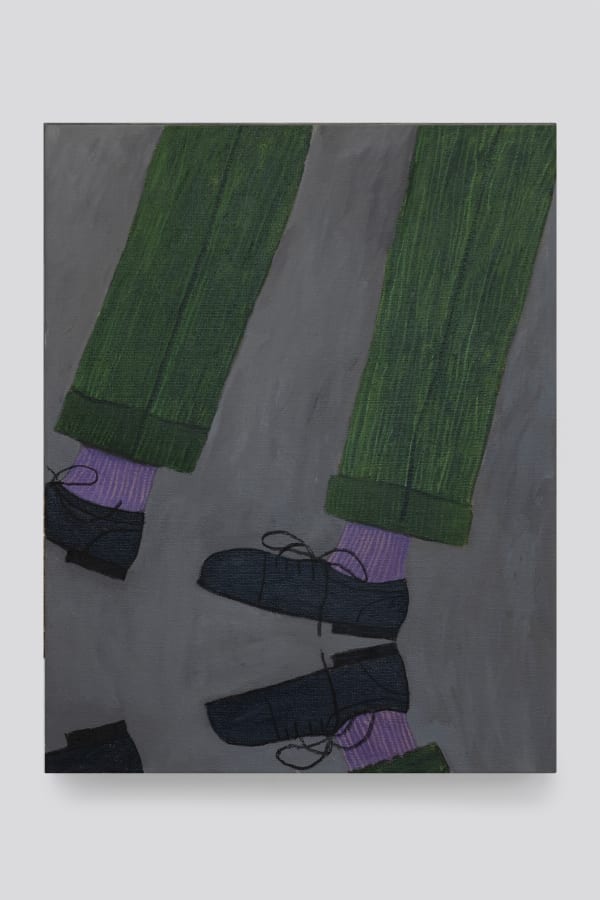Tom Howse: Borrowed Frogs
Borrowed Frogs lays bare the human condition, stretched taut between the monumental and the minute, the shared and the solitary. At the exhibition's core is a commanding rooftop painting, teeming with pigeons that embody the chaotic persistence of life itself. Positioned directly before this expansive scene is a meticulous grid of 21 smaller paintings-pots, plants, fruits, and human heads-arranged with clinical precision. The tension between the unruly vitality of the rooftop and the grid's rigid taxonomy generates a dynamic interplay, layering the contradictions of existence into a visual narrative that is as unsettling as it is compelling.
The rooftop, both a literal and metaphorical locus, embodies the precarious interplay of freedom and constraint. The pigeons, humble yet symbolically charged, articulate the fragile dynamics of community-restless, unresolved, and fleeting. Their erratic trajectories map an uneasy rhythm of connection and disconnection, as the rooftop becomes a psychological stage where solitude and sociability converge in uneasy proximity. This is no passive depiction of urban life; it is a space where the infinite brushes perilously against the banal, and where the tension between rootedness and flight becomes palpable.
In contrast, the grid of smaller works asserts an archival logic, its regimented structure imposing order on unruly fragments of existence. Pots evoke containment and the rituals of domesticity, plants oscillate between cultivated growth and wild excess, fruits speak to cycles of abundance and decay, and disembodied heads confront the viewer with an almost forensic immediacy, exposing the raw vulnerability of being seen. Yet these objects resist coherence, functioning instead as symbolic shards of a world in perpetual flux.
The contrast between these two visual modes amplifies the central tensions of Howse's practice. The rooftop, sprawling and dynamic, pulses with the intricate energies of collective life, while the grid compresses those same anxieties into concentrated, precisely delineated forms. Neither resolves the frictions they surface. The rooftop's chaotic expanse gestures outward, toward the unknowable, while the grid's ordered interiority evokes a containment that is ultimately illusory. Together, they constitute a meditation on the oscillation between freedom and confinement, chaos and control.
Howse interrogates how we navigate the fragmented terrains of contemporary existence-physical, emotional, and relational. The installation reframes the dichotomies of the monumental and the fragmentary, exposing their mutual interdependence. It probes the ever-shifting boundaries of the self in relation to a world that resists stability, offering no resolution but instead a provocative space in which to confront the layered, volatile topographies of the human psyche.










